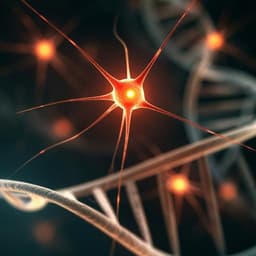
Medicine and Health
The fasciola cinereum of the hippocampal tail as an interventional target in epilepsy
R. M. Jamiolkowski, Q. Nguyen, et al.
This groundbreaking research reveals the fasciola cinereum neurons as a critical seizure node in drug-resistant mesial temporal lobe epilepsy. Conducted by a team of experts including Ryan M. Jamiolkowski and Quynh-Anh Nguyen, the study highlights the potential of targeted interventions to significantly reduce seizure duration in both mice and humans. Discover how these findings could reshape treatment strategies for epilepsy.
~3 min • Beginner • English
Related Publications
Explore these studies to deepen your understanding of the subject.







